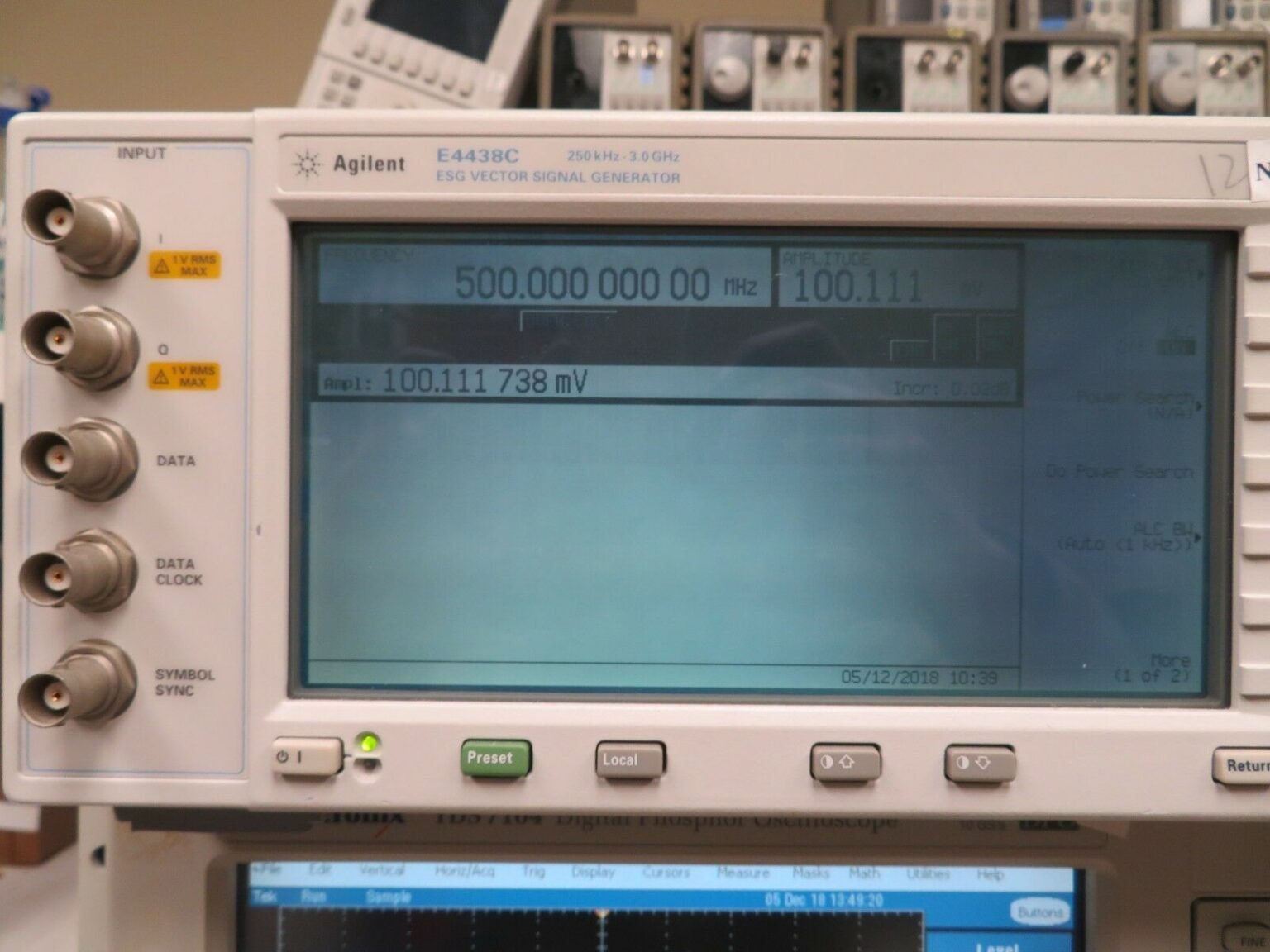
Frequency accuracy: same as RF reference source. Rate range for sine waveforms: 0.1 Hz to 100 kHz square, ramp, triangle: 0.1 Hz to 20 kHz.

Internal analog modulation source waveforms: sine, square, ramp, triangle, pulse, noise. Level accuracy: relative to CW at <=4 dBm standard, <=7.5 dBm Option UNB, <=4.5 dBm Option 506) <+/-1 dB. Minimum width with ALC on: 2 microseconds with ALC off: 0.4 microseconds. Pulse modulation on/off ratio: 80 dB 64 dB. Standard frequency switching speed with digital modulation on: 250 MHz to 1 GHz: +13 to -136 dBm >1 to 3 GHz: +10 to -136 dBm >3 to 4 GHz: +7 to -136 dBm >4 to 6 GHz: N/A. Minimum frequency: 100 kHz, however performance is not gauranteed.

Frequency Range: 250 kHz to 1, 2 3, 4, and 6 GHz, depending on option, with a resolution of 0.01 Hz.
#E4438C HOW TO#
Learn More Learn How to Use Your Driver Learn More About Instrument Drivers IDNet License Agreement Instrument Control Discussion Forum.
#E4438C GENERATOR#
The trigger signal has aligned at "7", so additional trigger signals will be ignored, until the W-CDMA real-time is toggled (On/Off) or software's "Apply" is executed.The Agilent E4438C ESG is a vector signal generator made to work with the newest generation of wireless communication systems. E4438C: Yes: ESG Vector Signal Generator: Next Steps Browse All Drivers Submit New Driver Request New Driver Request Support Follow this driver Rate this Driver. MXG/EXG starts a newly synched frame generation. The trigger delay time shown at this point includes the following: trigger detection and the (trigger delay + sync marker frame cycle (W-CDMA default is 80 ms). Cheap Communications Parts, Buy Quality Cellphones & Telecommunications Directly from China Suppliers:E4438C ESG Vector Signal Generator, 250 kHz to 6 GHz. The Keysight (Agilent) E4438C 250 kHz 6 GHz Vector Signal Generator combines outstanding RF performance and sophisticated baseband generation to deliver calibrated test signals at baseband, IF, and RF frequencies up to 6 GHz. The trigger delay count has been completed. MXG/EXG responds to the trigger signal ( Pattern Trigger in 1) and starts the trigger delay count to align the frame timing with the trigger timing. At this step, the output signal is W-CDMA modulated, but the modulated signal is uncorrected.Ĭustomer executes a trigger signal.

But, there is no front panel indication of the instrument being armed. The W-CDMA application is ready to receive a trigger signal. The generated IQ/RF signal is unstable for a short time, and frame timing aligned at “2" is interrupted. The MXG/EXG responds to the trigger signal ( Pattern Trigger in 1) and initiates the trigger delay count to align the frame timing with the trigger timing.įor the DPCH mode, the trigger delay value is: 1024 chip + Timing Offset + Timeslot Offset + SFN-CFN Offset + External Delay TimeĪfter the delay count is completed, the instrument stops the CW signal output and starts the W-CDMA modulated signal output.Īt this point, if a second trigger occurs, the MXG/EXG ignores the second trigger, because after the first trigger, the instrument has already aligned with the timing at “2”.Ĭustomer executes the “Apply” operation.

The RF signal is set automatically set to CW. Instrument is armed (Refer to instrument's display). E4428C & E4438C ESG Signal Generators Service Guide. The upsampling process inserts zero-valued samples between each pair of input samples to accommodate the faster clock rate of the interpolator, and the filter. The interpolation method is a process of upsampling followed by filtering.
#E4438C SOFTWARE#
The software was set for a single frame synchronization mode measurement: The E4438C and E8267C/D signal generators use interpolation in the digital-to-analog conversion of waveforms. For the N7600B W-CDMA/HSPA+ specific SCPI commands, refer to SCPI. Refer to your instrument's documentation at for the correct instrument SCPI commands. Figure 3 illustrates the single synchronization mode behavior, when the instrument is in E4438C compatible mode.


 0 kommentar(er)
0 kommentar(er)
